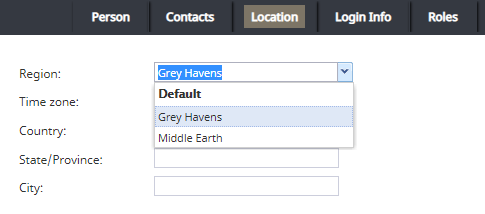Regional Routing for Remote Agents
If your contact center has agents working in a remote geographical location, it is possible to route customers calling from the remote location to agents in that same location. There are many benefits to regional routing, including:
- Reducing latency
- Complying with local laws
- Providing an ideal customer experience by connecting calls to agents who speak with the same regional accent and know the specifics of a region.
This tutorial describes how to do the following:
- Assign remote regions to specific agents
- Route incoming remote calls to remote agents using the Find Agent scenario block
Prerequisites
In order for regional routing to remote agents to work in your contact center, your service provider must do the following first:
- Configure the desired region
- Configure this region for the appropriate hosts
- Assign this region to a trunk
- Assign this trunk to an access number for your contact center
Inbound Configuration
1. Assign Specific Agents to the Remote Region
In order to assign specific agents to the remote region, in the Contact Center Administrator application, go to section Users & Teams > Users > Location tab. From the Region drop-down menu, select the remote region. Click Apply to save your changes.
2. Configure the "Find Agent" Block to Route Remote Incoming Calls
Next, create a voice scenario in the Scenario Builder application that directs calls from the remote region to agents in the remote region. This is done by configuring the Find Agent block with region set for the wait condition.
This condition will match the remote region to a user with the same remote region. If no matching region is found for the customer, the interaction will be routed to any user; if no user region is set, the user is matched to any interaction.
Note that you may expand the routing to all agents by defining additional escalation intervals in the Find Agent block. For example, after two seconds, you can specify the call to route to agents with higher service skill levels. After five seconds, you can specify that any agent can receive the call.
Outbound Configuration
If your contact center prefers remote agents to use remote access numbers only (i.e., for both inbound and outbound interactions), you may configure an outbound service with the desired access number. This is particularly useful for contact centers looking for more granularity in reporting.
For example, when a remote agent selects the "Remote Outbound Service" to dial out, that service's "from" phone number will be linked to the remote region's trunk (i.e., access number).


